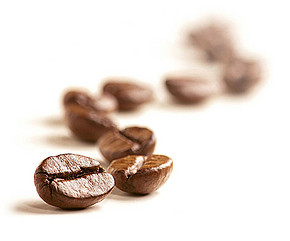Introduction to coffee taste of Ecuador Ecuador production and marketing resume
Follow the caf é (Wechat official account vdailycom) and found that Beautiful Cafe opened a small shop of its own.
Coffee arrived in Ecuador's Manabi province around 1860, then spread throughout the region, and began to be exported to Europe from the port of Manta in 1905. Ecuador is one of the few countries that grow Arabica and Robusta.
When diseases and insect pests hit the cocoa tree in the 1920s, many farmers began to turn their attention to coffee. Coffee export began to take off in 1935, and the production of 220000 bags in the past increased to 1.8 million bags in 1985. The global coffee crisis occurred in the 1990s, and domestic production inevitably decreased. In 2011, annual production returned to about 1 million bags. Coffee was Ecuador's main export cash crop until the 1970s, but was later replaced by oil, shrimp and bananas.
Ecuadorians consume more instant coffee than fresh coffee. Interestingly, because Ecuadorian coffee is not cheap to produce, instant coffee manufacturers have to import it from Vietnam instead of using local coffee.
One of the reasons for the low reputation of coffee quality in Ecuador is that 40% of the total output is Robusta, and the quality of most Ecuadorian exported coffee is relatively low. To keep costs down, many coffee beans are harvested after they are dried on trees or in the yard, a form of sun treatment known locally as cafe é en bola. This kind of coffee is usually used to make instant coffee, and 83% of the country's exported coffee is tanned. Colombia is one of the major importers because Colombian instant coffee manufacturers are willing to pay higher prices than local Ecuadorian businessmen. This is because Colombian coffee brands are very strong in the export market, so they are also relatively expensive.

Although coffee has a long history in Ecuador, it is not until now that people begin to think that coffee here has great potential. There are absolutely excellent geographical conditions and climate to produce quality coffee. In recent years, it remains to be seen whether the investment in the boutique coffee industry will improve the overall coffee quality in Ecuador in the future.
Production and marketing resume
Few coffee here can be traced back to a single estate, mostly because producers or exporters mix beans from multiple sources. This kind of coffee may come from a large number of coffee farmers, and the quality is sometimes excellent.
Coffee taste
Ecuadorian coffee begins to show its true quality and sweetness, while more complex coffee flavors begin to appear, adding to the taste with a little pleasant acidity.
Producing area
Population: 15224000
2013 production (60 kg / bag): 676000 bags
Ecuadorian coffee is gradually attracting the attention of the boutique coffee industry. Although low-altitude producing areas are less likely to produce excellent coffee, those from high elevations have great potential.
Important Notice :
前街咖啡 FrontStreet Coffee has moved to new addredd:
FrontStreet Coffee Address: 315,Donghua East Road,GuangZhou
Tel:020 38364473
- Prev

Ecuador: coffee growers analyze business opportunities in the Russian market
Quito (Picincha).-Ecuadorian entrepreneurs and Russia held a meeting to strengthen coffee exports to the Russian market. The event was attended by trade union leaders of the two countries and representatives of 25 enterprises importing coffee. This is an opportunity to promote exports and investment (near Ecuador). The content of the meeting is how to strengthen the production of coffee in Ecuador and for the coffee sector and the business of the Russian city.
- Next

An introduction to the Historical Origin of Ugandan Coffee beans
Following Ka Pai (Wechat official account vdailycom) found that the Beautiful Caf é opened a shop of its own Uganda fact population: 32 million area: 241038 square kilometers location: located in the Great Lakes region of Africa, with Uganda bordering the Democratic Republic of the Congo to the west; North Sudan; Kenya to the east; Lake Victoria, Tanzania and Rwanda to the south. Capital: Kampala official
Related
- Detailed explanation of Jadeite planting Land in Panamanian Jadeite Manor introduction to the grading system of Jadeite competitive bidding, Red bid, Green bid and Rose Summer
- Story of Coffee planting in Brenka region of Costa Rica Stonehenge Manor anaerobic heavy honey treatment of flavor mouth
- What's on the barrel of Blue Mountain Coffee beans?
- Can American coffee also pull flowers? How to use hot American style to pull out a good-looking pattern?
- Can you make a cold extract with coffee beans? What is the right proportion for cold-extracted coffee formula?
- Indonesian PWN Gold Mandrine Coffee Origin Features Flavor How to Chong? Mandolin coffee is American.
- A brief introduction to the flavor characteristics of Brazilian yellow bourbon coffee beans
- What is the effect of different water quality on the flavor of cold-extracted coffee? What kind of water is best for brewing coffee?
- Why do you think of Rose Summer whenever you mention Panamanian coffee?
- Introduction to the characteristics of authentic blue mountain coffee bean producing areas? What is the CIB Coffee Authority in Jamaica?

